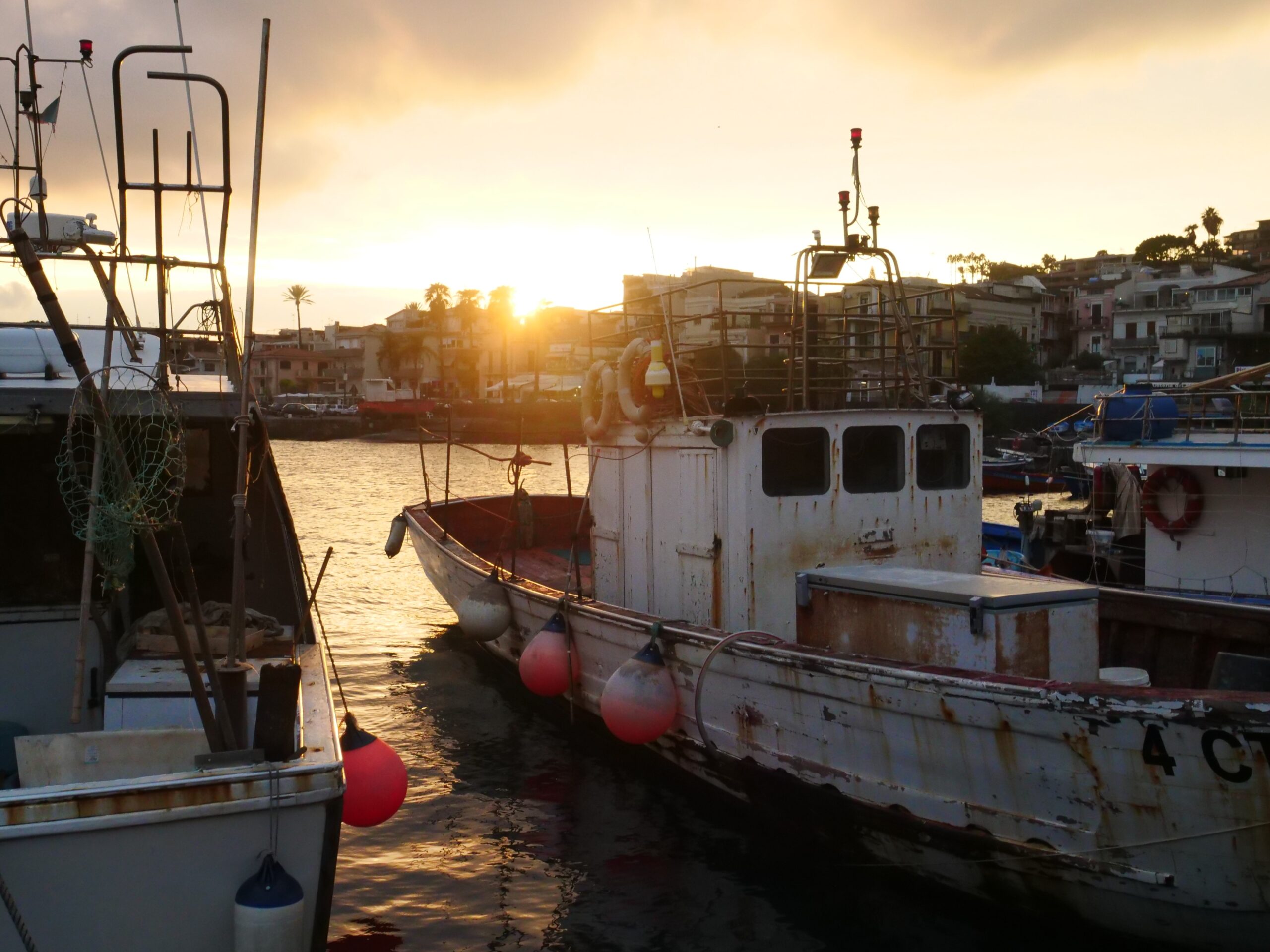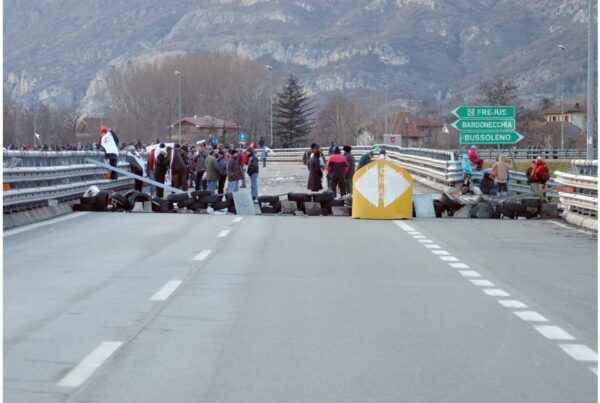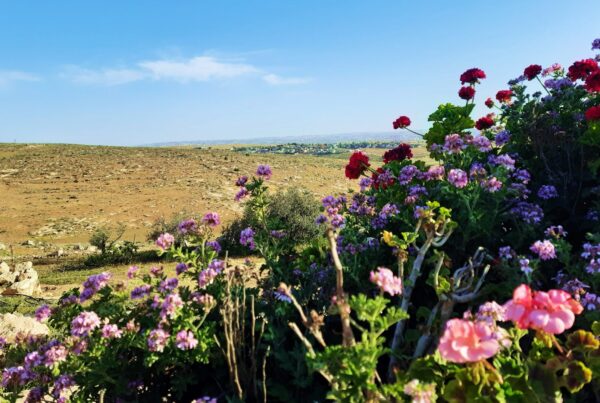by Francesco Torri
Along the eastern Sicilian coast, fisherfolks are struggling with the bearded fireworm: a native species of the Mediterranean whose population is booming due to warmer waters caused by climate change. Fireworms destroy the catch, pushing artisanal fishing on the brink of collapse. But the damage could be contained by joining research and action.
“The sea is covered! You can’t see what’s underneath. The fish tell us, and when we find them mutilated in the nets, we understand the sea is getting sick. Today it’s the bearded fireworm, who knows what will come tomorrow!” says Giovanni, a fisherfolk from Catania, as he prepares the nets on his boat.
His voice, marked by the weight of daily struggles, describes a reality that is no longer the same for Sicilian artisanal fisherfolks. “Every haul is a battle. All the time we find fish devoured by dozens of bearded fireworms. These are irreparable damages for us.”
For those who have never heard of this underwater creature, measuring approximately 20cm, the bearded fireworm is not an alien, but a native species of the Mediterranean Sea that has become an increasing threat to artisanal fishing. Being a thermophilic species, its spread is closely related to the rising sea temperatures, a phenomenon that has reached concerning proportions in recent decades.
The bearded fireworm (scientific name Hermodice Carunculata) is a benthic species that thrives in warm waters and lives at depths not exceeding 40 meters. It feeds on dead animals and decaying flesh and is characterized by venomous white bristles on its back.
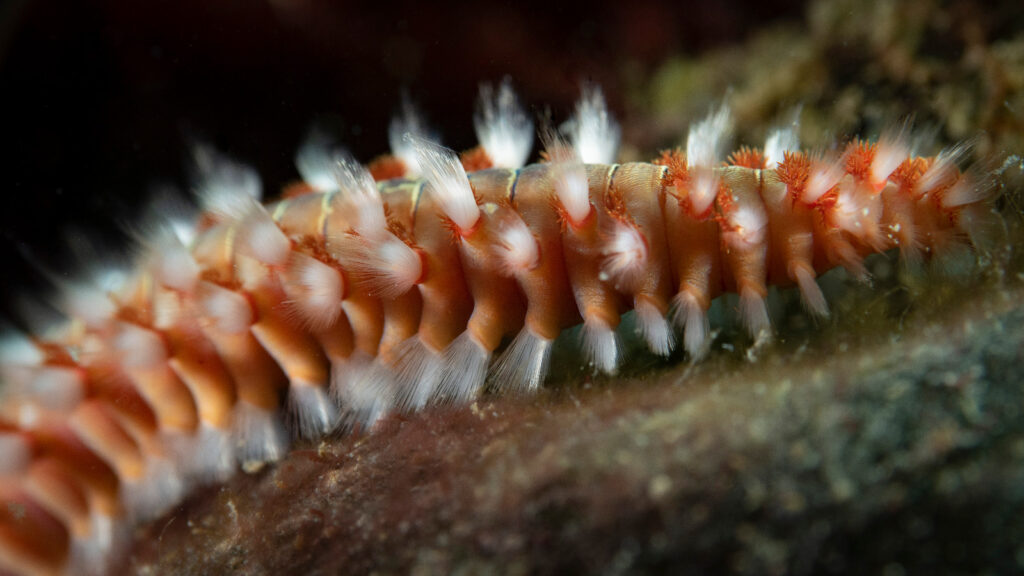
A pic of a bearded fireworm on the seabed by underwater photographer Emanuele Mastrangelo.
The largest specimen sighted so far measures 70 cm, but most are between 20 and 40 cm. Its voracity is well-known to fishermen: “Once the catch is in the nets, it’s only a matter of time before hordes of bearded fireworms attack. They enter the fish through the eyes and gills, devouring them from the inside,” explains Salvatore, a fisherman from Salina, visibly exhausted by the daily fight against this marine invasion.
But how did we get to this point?
In the marine world, as in biology in general, it’s hard to establish direct causal links. However, experts agree that climate change is one of the main factors behind the bearded fireworm’s expansion in the Mediterranean.
According to Professor Roberto Simonini from the University of Reggio Emilia and Modena, “To explain the bearded fireworm’s spread in the Mediterranean, it’s necessary to analyze large-scale changes, and climate change is the main culprit. It’s easy to realize that a species thriving in warm waters, having found higher temperatures for longer periods, is reproducing more frequently and rapidly.”
The data confirms this theory: the Mediterranean Sea has never been this warm. As shown by images from the Copernicus Marine Data Store, a European Union Earth observation and satellite monitoring system, surface temperatures above 30°C are now the norm during summer.
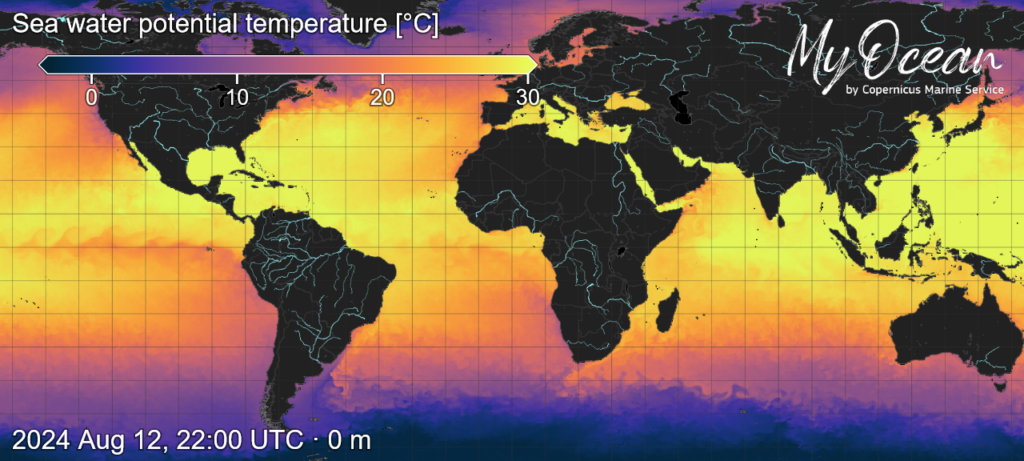
A map from Copernicus, the EU’s satellite program for security and environment, reveals Mediterranean temperatures hovering around 30 degrees Celsius (Source: Copernicus EU).
The testimony of bathers swimming even in November and fisherfolks witnessing radical changes in their working environment serve as tangible proof of a phenomenon that shows no sign of slowing down.
This is not surprising considering the global trend of rising average temperatures – currently 1.2°C degrees higher compared to pre-industrial levels. Working as heat sinks, oceans, and seas absorb much of the heat in excess in the atmosphere. Due to this process, the Mediterranean Sea has been heating at worrying rates ranging from 0.3° up to 1° degree per year, thereby leading to drastic impacts on marine ecosystems and coastal communities.
The Crisis of Artisanal Fishing
With the expansion of the bearded fireworm, fishing communities along the eastern Sicilian coast, especially in areas like Marzamemi and the Aeolian Islands, are facing a full-blown crisis.
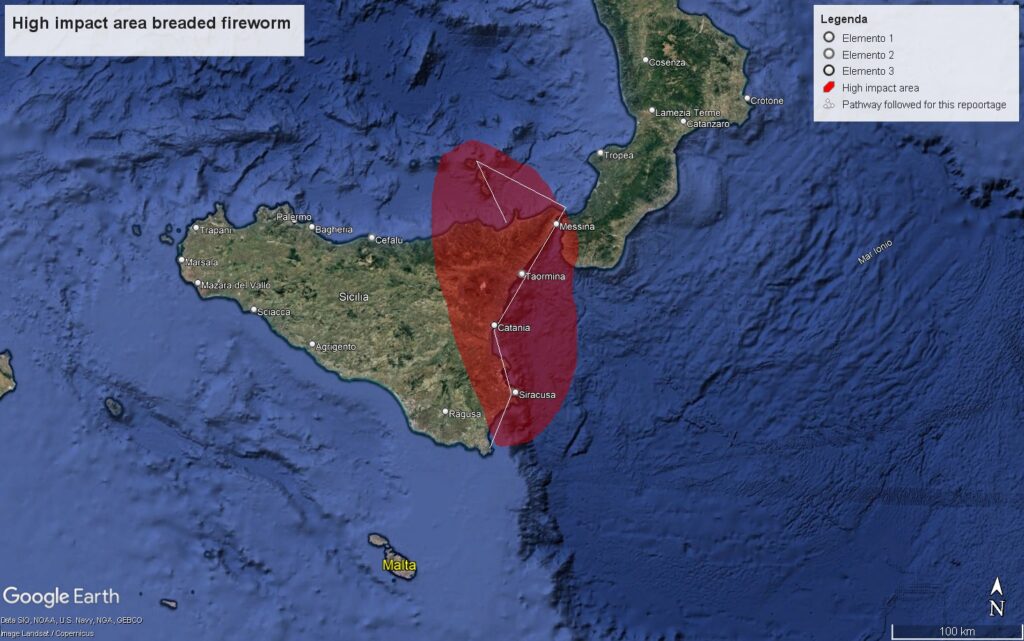
Itinerary followed by the author to carry out this reportage.
“Following the trend of recent years, the tropicalization of the Mediterranean due to global warming, we see bearded fireworm populations growing and having an increasing impact, especially in southern Tyrrhenian and southeast Ionian Sicily. Here, the species is causing economic damage, as we have scientifically shown, to certain types of artisanal fishing, like gillnets fishing, pots, and longlines,” explains Professor Francesco Tiralongo, researcher at the University of Catania.
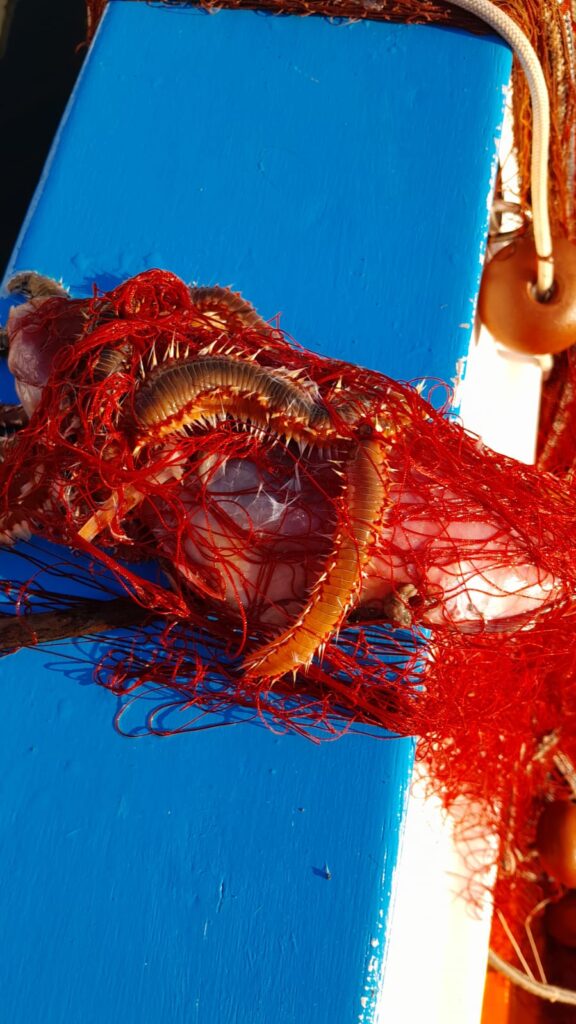
Bearded fireworms caught in the nets of the fisherman Antonello di Salina (Credit: Francesco Torri).
Tiralongo, the first in Europe to study the effects of the bearded fireworm on artisanal fishing, highlights how the intensifying proliferation of this species is reducing fishermen’s earnings.
“After just a few hours in the nets, the bearded fireworm devours the fish, leaving only bones and carcasses. If they’re not damaged, they’re often discarded for fear that the venomous bristles might have contaminated the meat,” the professor explains. “Because of the ‘few but good’ principle, fishermen are now forced to leave the nets in the water for less time, catching fewer fish and thus limiting their earnings.”
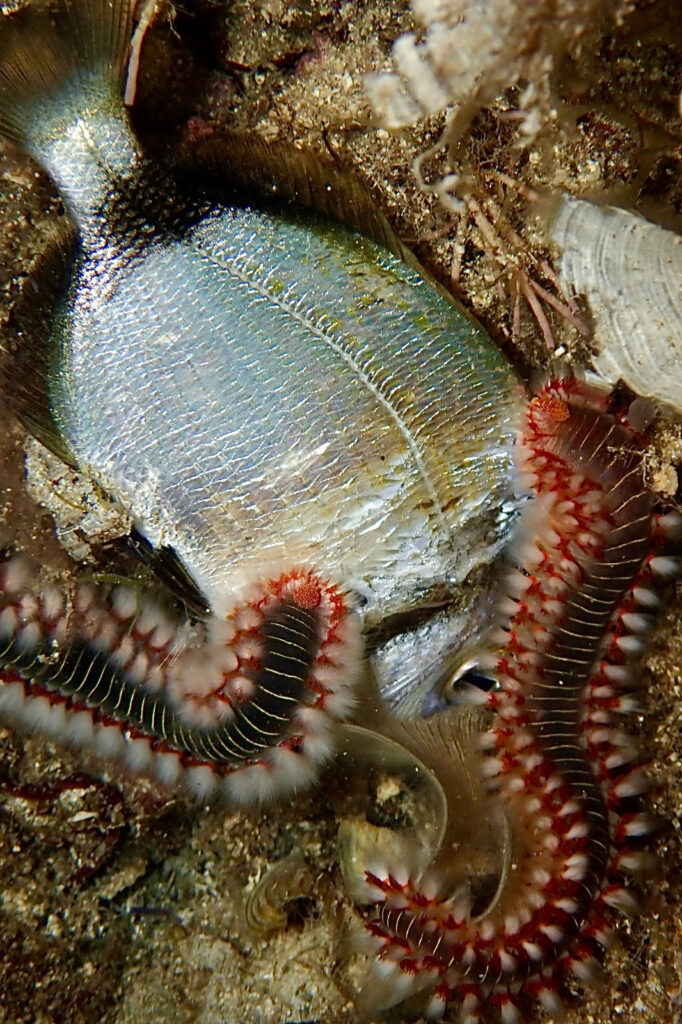
Specimens of bearded fireworms while devouring a prey ( Credit: Emanuele Mastrangelo).
Small-scale fishing, already in crisis for other reasons (from the regulations favoring large companies to the decline of fish resources), is now also threatened by this new “sea cleaner.”
The impact of the proliferation of this species, coupled with other factors is severely impacting a millennia-old tradition that represents a vital historical and cultural heritage for Sicily.
An Enemy Without Borders
The Aeolian Islands archipelago is one of the most affected areas, with its rocky sea-beds and warm waters providing the ideal habitat for the bearded fireworm.
Antonello, a fisherfolk from Salina, shares: “I’ve been going out to sea since I was 5, and now I’m 57, and I’ve never seen anything like this. The warming of the sea is definitely at the root of all this. Once you go beyond 40 meters, you won’t find bearded fireworm, but here, near the coast, the problem is unbearable.”
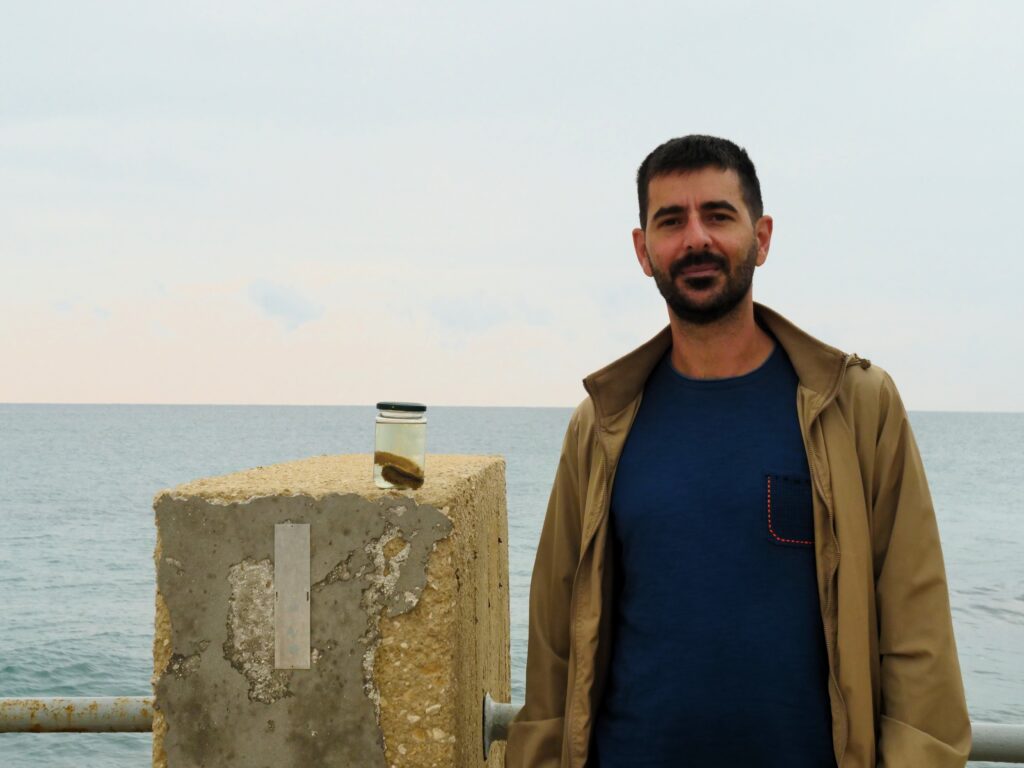
Francesco Tiralongo with a specimen of bearded fireworm preserved in alcohol for over 30 years for scientific purposes (Credit: Francesco Torri).
Massimo, a young fisherfolk, adds: “Fishing at greater depths, I don’t find many, but despite this, in recent years, I’ve seen more and more! I’ve spotted several even at the Secca del Capo, 3 miles northeast of Capo Faro, separated from the islands by depths exceeding 500 meters. How did they get there?”
In Lipari, the situation is equally dire, to the extent that the president of the Consortium for the Management of Artisanal Fishing (CO.GE.PA), Franco Taranto, has appealed to the Region for concrete help for the fisherfolks, who are now on their knees.
“Artisanal fishing is going through a dramatic period. These fisherfolk might be the last to practice this profession here,” says Enrico Navarra, former president of the Messina Aquarium, as he observes the slow decline of traditional fishing. “There’s no support from institutions, and fisherfolks are the first victims of the changes the Mediterranean is undergoing.”
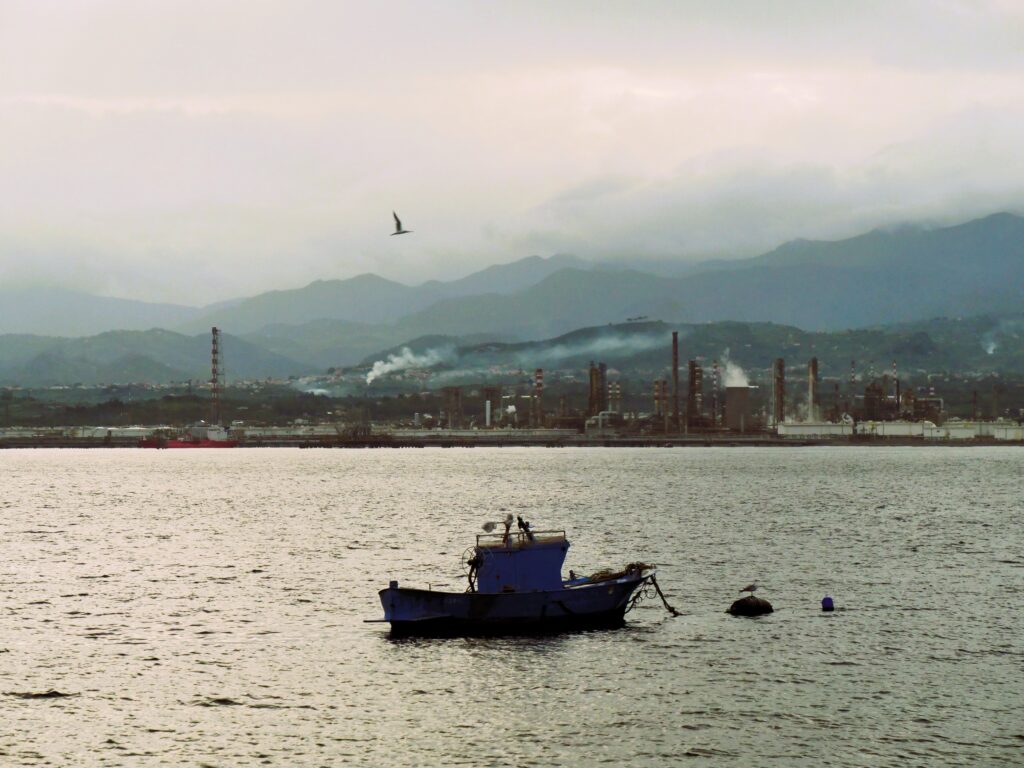
Fishing vessel moored in front of Capo Milazzo with the Milazzo refinery in the background (Credit: Francesco Torri).
Enrico’s words reflect the sentiments of all the fisherfolks interviewed: resignation in the face of a problem far beyond their control and the acceptance that their profession, as ancient as their families’ memory, is doomed to disappear due to a system that’s jeopardizing the world’s fish resources.
A Possible Solution? Research and Action
To address the emergency, the “Worms Out” project launched in 2022. It is an initiative to monitor and study the bearded fireworm, involving several Italian universities and the National Institute for Environmental Protection and Research (ISPRA).
Coordinated by Francesco Tiralongo and Michela D’Alessandro, the project aims to reduce the impact of the species through awareness, monitoring, and sampling actions, protecting both fisherfolks and bathers.
“Not only is fishing at risk of significant economic losses but bathers’ health is also threatened, impacting the tourism sector,” explains Michela D’Alessandro, researcher at the National Institute of Oceanography and Experimental Geophysics (OGS).
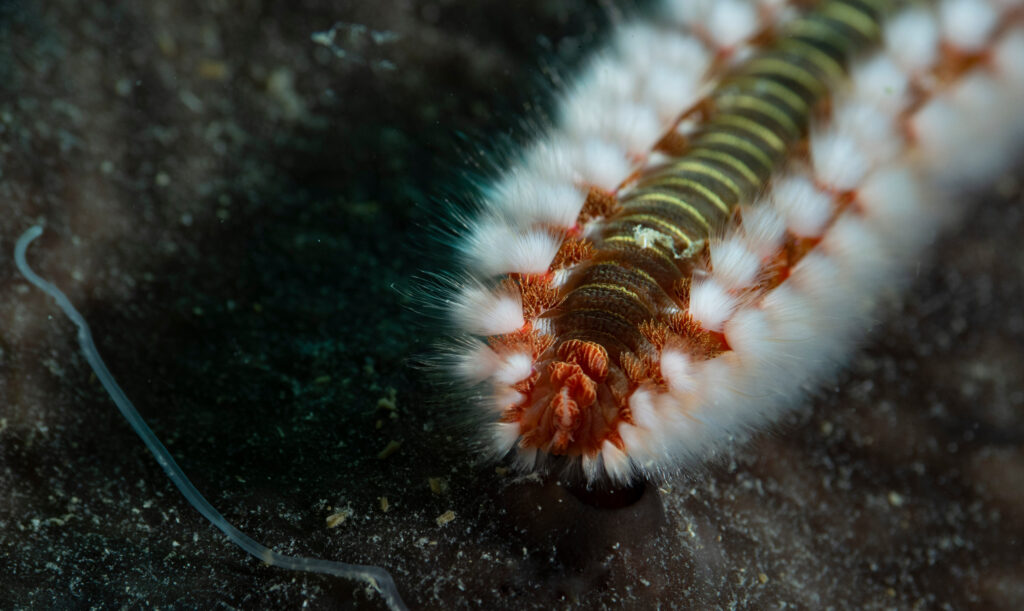
A pic of a bearded fireworm on the seabed by underwater photographer Emanuele Mastrangelo.
If the bearded fireworm comes into contact with human skin, it causes painful burns and potential anaphylactic shock, and if the venomous bristles enter the eyes, it could result in vision loss.
One of the methods implemented by “Worms Out” is setting up traps to catch large quantities of fireworms and eliminate them. “They need to be dried in the sun,” Michela continues, “because if they’re only cut and thrown back into the sea, they can reproduce.”
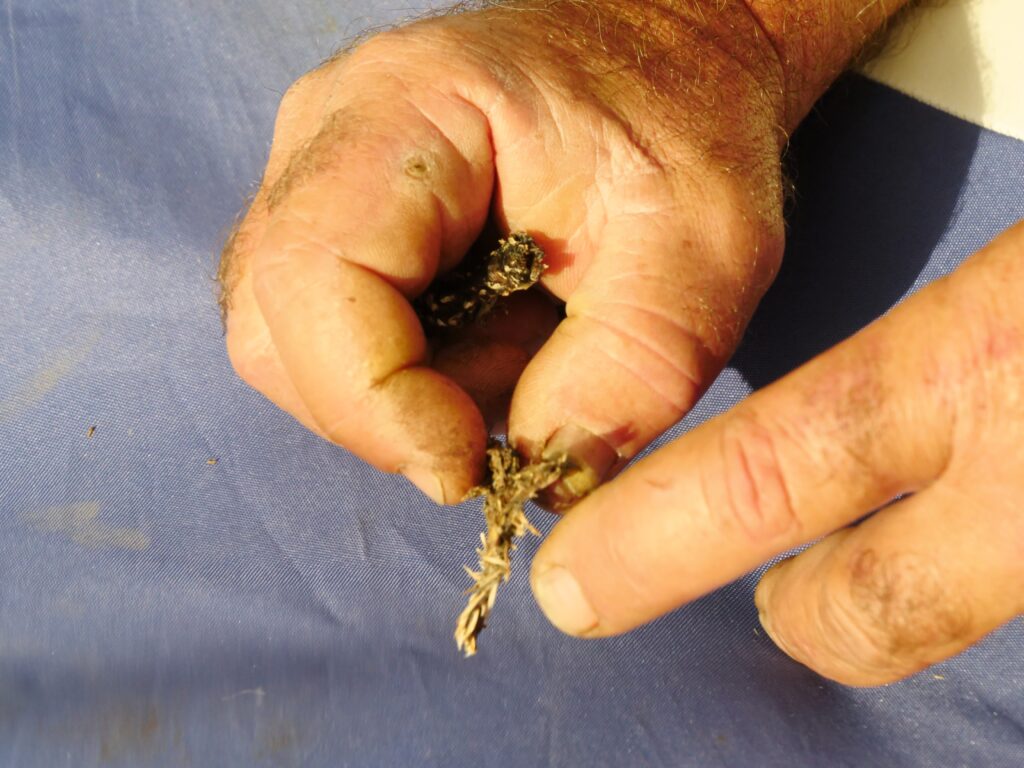
Remains of fireworms found in the nets by the fishermen of Salina and left to dry in the sun (Credit: Francesco Torri).
This is supported by a recent study by Professor Simonini, which confirmed the bearded fireworm’s ability to regenerate its cells when damaged.
Another important monitoring project is the “Bearded Fireworm Monitoring” citizen science initiative, organized by the University of Modena and Reggio Emilia, which invites the public to report sightings of the species to map its distribution and study the spread of the problem.
Anyone who spots a bearded fireworm can report it on the Facebook page MonitoraggioVermocane, specifying the date, location, depth, and water temperature.
The battle against the bearded fireworm is just one example of how climate change is transforming our seas. Possible solutions, besides the imperative of climate mitigation, are still far off, but the hope is that research and commitment from local communities will help mitigate a problem that seems to grow by the day.
–
Francesco Torri is an investigative journalist trained in environmental law, currently reporting on socio-environmental conflicts linked to the misconducts of multinational companies. You can follow him on Instagram @resistance_voices.
Image on top: Fishing port of Acitrezza, in the province of Catania (Credit: Francesco Torri).
This article was produced with the support of the Earth Journalism Network, a project of Internews.


